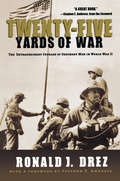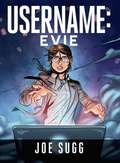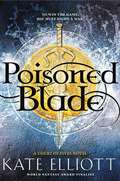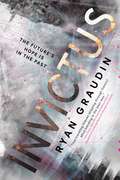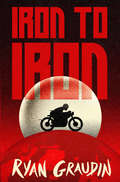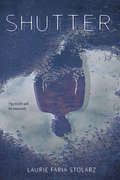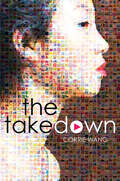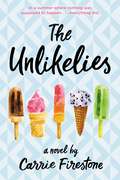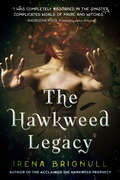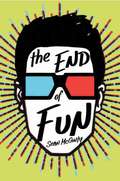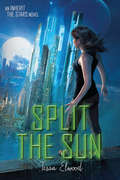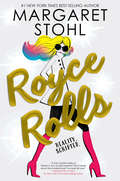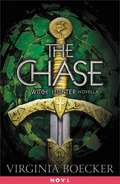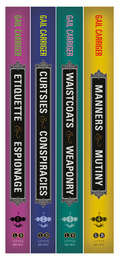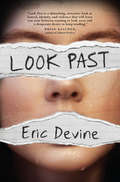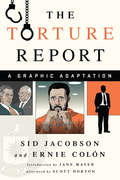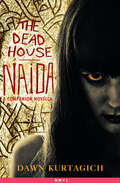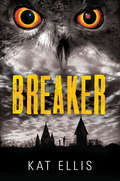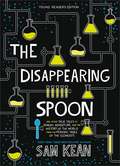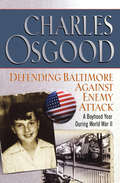- Table View
- List View
Dreamland Burning
by Jennifer Latham<p>Some bodies won't stay buried. Some stories need to be told. <p>When seventeen-year-old Rowan Chase finds a skeleton on her family's property, she has no idea that investigating the brutal century-old murder will lead to a summer of painful discoveries about the past... and the present. <p>Nearly one hundred years earlier, a misguided violent encounter propels seventeen-year-old Will Tillman into a racial firestorm. In a country rife with violence against blacks and a hometown segregated by Jim Crow, Will must make hard choices on a painful journey towards self discovery and face his inner demons in order to do what's right the night Tulsa burns. <p>Through intricately interwoven alternating perspectives, Jennifer Latham's lightning-paced page-turner brings the Tulsa race riot of 1921 to blazing life and raises important question about the complex state of US race relations - both yesterday and today.</p>
Twenty-Five Yards of War: The Extraordinary Courage of Ordinary Men in World War II
by Stephen E. Ambrose Ronald J. DrezFrom the sinking decks of a navy cruiser to the cockpit of a doomed B-25 bomber, Ronald J. Drez takes us to the front lines of World War II. Through Drez's gripping narrative style, we meet twelve men, all ordinary soldiers, and learn what the war was like through their eyes, experiencing their own 'twenty-five yards of war.' The men in these pages represent all branches of the military who were sent on impossible missions, where they witnessed triumphs and tragedies. As a result of Drez's ten years of research and over 1,400 interviews, Twenty-Five Yards of War is a tribute to all of the soldiers who fought in World War II--those who walked away with amazing stories to tell, and those who did not make it home.
Username: Evie
by Joe SuggThe first book by YouTube star Joe Sugg tells the story of Evie, a socially-isolated teenage girl who struggles to fit in at high school. Always looking for a way to escape, she spends her nights supporting her terminally-ill father, who is tirelessly working on a computer program. When her father passes away, Evie is forced to live with her aunt, uncle, and cousin--Mallory--who is the most popular girl in school and the bane of Evie's existence. One night, as she's going through her father's computer, Evie stumbles on a strange file that sucks her into a virtual world. As Evie explores this strange, new land, she learns it was the project her father was working so tirelessly on: a virtual Eden where Evie can get away and be herself. However, Evie is not alone; Mallory also discovers the world and her presence causes the idyll to descend into chaos. Now Evie must save the virtual world or lose her last connection to her father. <p><p> <i>Advisory: Bookshare has learned that this book offers only partial accessibility. We have kept it in the collection because it is useful for some of our members. Benetech is actively working on projects to improve accessibility issues such as these.</i>
Bright Thrones: A Court of Fives Novella (Court of Fives)
by Kate ElliottAn exciting e-novella set in the world of the New York Times bestselling Court of Fives, from World Fantasy Award finalist Kate Elliott!
Poisoned Blade (Court of Fives #2)
by Kate ElliottIn this thrilling sequel to World Fantasy Award finalist Kate Elliott's captivating young adult debut, a girl immersed in high-stakes competition holds the fate of a kingdom in her hands.Now a Challenger, Jessamy is moving up the ranks of the Fives--the complex athletic contest favored by the lowliest Commoners and the loftiest Patrons alike. Pitted against far more formidable adversaries, success is Jes's only option, as her prize money is essential to keeping her hidden family alive. She leaps at the chance to tour the countryside and face more competitors, but then a fatal attack on her traveling party puts Jes at the center of the war that Lord Kalliarkos--the prince she still loves--is fighting against their country's enemies. With a sinister overlord watching her every move and Kal's life on the line, Jes must now become more than a Fives champion.... She must become a warrior.
Invictus
by Ryan Graudin<p>A heart-stopping adventure that defies time and space--New York Times bestselling author Marie Lu calls it "an incredibly intricate, brilliantly paced, masterfully written journey." <p>Farway Gaius McCarthy was born outside of time. The son of a time traveler from 2354 AD and a gladiator living in ancient Rome, Far's very existence defies the laws of nature. All he's ever wanted was to explore history for himself, but after failing his entrance exam into the government program, Far will have to settle for a position on the black market-captaining a time-traveling crew to steal valuables from the past. <p>During a routine heist on the sinking Titanic, Far meets a mysterious girl named Eliot who always seems to be one step ahead of him. Eliot has secrets-big ones-that will affect Far's life from beginning to end. Armed with the knowledge that history is not as steady as it seems, she will lead Far and his team on a race through time to set things right before the clock runs out.</p>
Iron to Iron (Wolf by Wolf)
by Ryan GraudinOnce upon a different time, there was a boy who raced through a kingdom of death.Sixteen-year-old Luka Löwe has one goal in mind: Win the 1955 Axis Tour and become the first Double Cross victor. If he can accomplish that, maybe his father will finally see him as a worthy son. He's completed the grueling trek from Germania to Tokyo before, but this time is different. Luka never expected to meet Adele Wolfe, another racer posing as her twin brother and with a singular dream--to live life on her own terms.When Luka and Adele form an alliance, an unlikely bond forms, and even possibly love. But only one person can win the Axis Tour....Can everything Luka and Adele built together survive the race?Word count: ~24000
Shutter
by Laurie Faria StolarzTHE FACTS * Julian Roman, age sixteen, is an escapee from the Fairmount County Juvenile Detention Facility.* His parents, Michael Roman and Jennifer Roman, are dead.* Julian is wanted for murder. THE QUESTIONS * Why is Julian Roman on the run?* Just how dangerous is he?* And who did kill Michael and Jennifer Roman, if not Julian?Sixteen-year-old Day Connor views life through the lens of her camera, where perspective is everything. But photographs never tell the whole story. After Day crosses paths with Julian, the world she pictures and the truths she believes-neatly captured in black and white-begin to blur. Julian is not the "armed and dangerous" escapee the police are searching for, but his alibis don't quite add up, either. There is more to his story. This time, Day is determined to see the entire picture . . . whatever it reveals. Did he? Or didn't he?Day digs deeper into the case while Julian remains on the run. But the longer her list of facts becomes, the longer the list of questions becomes, too. It's also getting harder to deny the chemistry she feels for him. Isit real? Or is she being manipulated?Day is close to finding the crack in the case. She just needs time to focus before the shutter snaps shut. Laurie Faria Stolarz is a master of suspense and romance. Shutter will keep readers guessing until the very end.
The Takedown
by Corrie WangKyla Cheng doesn't expect you to like her. For the record, she doesn't need you to. On track to be valedictorian, she's president of her community club, a debate team champ, plus the yummy Mackenzie Rodriguez has firmly attached himself to her hip. She and her three high-powered best friends don't just own their senior year at their exclusive Park Slope, Brooklyn high school, they practically define the hated species Popular. Kyla's even managed to make it through high school completely unscathed. Until someone takes issue with this arrangement. A week before college applications are due, a video of Kyla "doing it" with her crush-worthy English teacher is uploaded to her school's website. It instantly goes viral, but here's the thing: it's not Kyla in the video. With time running out, Kyla delves into a world of hackers, haters and creepy stalkers in an attempt to do the impossible-take something off the internet-all while dealing with the fallout from her own karmic footprint. Set in near-future Brooklyn, where privacy is a bygone luxury and every perfect profile masks damning secrets, The Takedown is a stylish, propulsive, and provocative whodunit, asking who would you rely on if your tech turned against you?
The Unlikelies
by Carrie Firestone<p>Rising high school senior Sadie is bracing herself for a long, lonely, and boring summer. But things take an unexpected turn when she steps in to help rescue a baby in distress and a video of her good deed goes viral. <p>Suddenly internet-famous, Sadie's summer changes for the better when she's introduced to other "hometown heroes." These five very different teens form an unlikely alliance to secretly right local wrongs, but when they try to help a heroin-using friend, they get in over their heads and discover that there might be truth in the saying "no good deed goes unpunished." Can Sadie and her new friends make it through the summer with their friendships--and anonymity--intact? <p>This rich and thought-provoking novel takes on timely issues and timeless experiences with a winning combination of romance, humor, and wisdom. </p>
The Hawkweed Legacy (The Hawkweed Series #2)
by Irena BrignullFrom screenwriter Irena Brignull, the stunning sequel to her critically acclaimed YA debut, The Hawkweed Prophecy ("Full of romance, heart and suspense...completely absorb[ing]." -Madeleine Roux) about a young witch forced to choose between love and magic.Poppy is discovering a purpose for her powers in Africa, but she is haunted by a vision of her own death. Taken in by a boy and his great-grandmother, a healer, they vow to keep her safe-even if that ultimately means holding her captive. But Poppy never stops longing for Leo and, when she feels his magic begin to spark, she will do anything to be reunited with him.Desperate to regain Poppy's trust and bring her home, Charlock embarks on a plan to reunite Leo with his mother. What Charlock doesn't foresee are the string of consequences that she sets into motion that leave Ember all alone and prey to manipulation, the clan open to attack from other witches, Sorrel vulnerable to Raven's ghost, Betony determined to protect her son from his father's fate, and which leave both Leo and Poppy in terrible danger.
The End of Fun (An Enemy Novel #7)
by Sean McGintyEveryday Reality is a Drag?.FUN¿-the latest in augmented reality-is fun but it's also frustrating, glitchy, and dangerously addictive . Just when everyone else is getting on, 17-year-old Aaron O'Faolain wants off.But first he has to complete his Application for Termination, and in order to do that he has to deal with his History-not to mention the present, including his grandfather's suicide and a series of clues that may (or may not) lead to buried treasure. As he attempts to unravel the mystery, Aaron is sidetracked again . . . and again. Shadowed by his virtual "best friend," Homie, Aaron struggles with love, loss, dog bites, community theater, wild horses, wildfires, and the fact (deep breath) that actual reality can sometimes surprise you.Sean McGinty's strikingly profound debut unearths a world that is eerily familiar, yet utterly original. Discover what it means to come to the end of fun.
Holding Smoke
by Elle Cosimano"An inventive paranormal gambit, a compelling lead character, and a plot that twists and turns through to the last page." -- Claudia Gray, New York Times best-selling author of the Evernight series "Intelligent, sharp-edged and action packed." -- Alan Lawrence Sitomer, author of The Hoopster and Caged Warrior John "Smoke" Conlan is serving time for two murders-but he wasn't the one who murdered his English teacher, and he never intended to kill the only other witness to the crime. A dangerous juvenile rehabilitation center in Denver, Colorado, known as the Y, is Smoke's new home and the only one he believes he deserves. But, unlike his fellow inmates, Smoke is not in constant imprisonment. After a near death experience leaves him with the ability to shed his physical body at will, Smoke is able to travel freely outside the concrete walls of the Y, gathering information for himself and his fellow inmates while they're asleep in their beds. Convinced his future is only as bright as the fluorescent lights in his cell, Smoke doesn't care that the "threads" that bind his soul to his body are wearing thin-that one day he may not make it back in time. That is, until he meets Pink, a tough, resourceful girl who is sees him for who he truly is and wants to help him clear his name. Now Smoke is on a journey to redemption he never thought possible. With Pink's help, Smoke may be able to reveal the true killer, but the closer they get to the truth, the more deadly their search becomes. The web of lies, deceit, and corruption that put Smoke behind bars is more tangled than they could have ever imagined. With both of their lives on the line, Smoke will have to decide how much he's willing to risk, and if he can envision a future worth fighting for.
The Scrapbook of My Life
by Alfie DeyesFrom his early days as a budding amateur vlogger, through to everyone's favorite YouTube superstar, Alfie Deyes' story is the stuff of dreams. With millions of followers across the world, his unique brand of nothingness has come to define a generation, while his YouTube channel continues to gain new followers on a daily basis.Now, for the very first time, Alfie talks about how it all began...From growing up on the sunny south coast of England, having fun with friends and thinking up pranks, dares, and silly activities throughout the long summer holidays in Brighton, through to recording his first ever vlog at the age of 15, The Scrapbook of My Life is the story of how a young, ambitious kid with a big character took the world by storm.But The Scrapbook of My Life isn't a typical autobiography. Join Alfie as he recalls his first childhood memories, his first day at school, his first ever job, and how he has moved from his hometown to the wide-eyed metropolis of London--and fill in your own pages alongside your favorite YouTube star! With alternate pages for readers to complete, including pages for sticking photographs, completing stats and facts, and collecting souvenirs, The Scrapbook of My Life is the ultimate journal for PointlessBlog fans, old and new!
Split the Sun: An Inherit the Stars Novel
by Tessa ElwoodThe Ruling Lord of the House of Galton is dead and the nation is divided. Kit Franks, a nobody escalated to infamy since her mother bombed the House capitol city, wishes she were dead, too. Then Mom-the-terrorist starts showing up on feeds and causing planet-wide blackouts and Kit becomes a target.Kit's inundated with half-truths, betrayals, and the coded subtext in Mom's universal feed messages meant for her alone. Everyone from family to government enforcers seems to have a vision for Kit's future. The question is, does Kit have a vision for herself?
Royce Rolls
by Margaret StohlSixteen-year-old Bentley Royce seems to have it all: an actual Bentley, tuition to a fancy private school, lavish vacations, and everything else that comes along with being an LA starlet. But after five seasons on her family's reality show, Rolling with the Royces, and a lifetime of dealing with her narcissistic sister, Porsche, media-obsessed mother, Mercedes, and somewhat clueless brother, Maybach, Bentley wants out. Luckily for her, without a hook for season six, cancellation is looming and freedom is nigh. With their lifestyle on the brink, however, Bentley's family starts to crumble, and one thing becomes startlingly clear--without the show, there is no family. And since Bentley loves her family, she has to do the unthinkable--save the show. But when her future brother-in-law's car goes over a cliff with both Bentley and her sister's fiancé inside-on the day of the big made-for-TV wedding, no less-things get real. Really real. Like, not reality show real. Told in a tongue-in-cheek voice that takes a swipe at all things Hollywood, Royce Rolls is a laugh-out-loud funny romp with an LA noir twist about what it means to grow up with the cameras rolling and what really happens behind the scenes.
The Chase: A Witch Hunter Novella (The Witch Hunter)
by Virginia BoeckerA witch and a revenant. One full of life, the other technically dead. Fifer and Schuyler's relationship is nothing if not unusual. Some might even call it ill-advised. But try as they might to push each other away, something keeps bringing them back together.Then a force stronger than their attraction comes between them: Lord Blackwell, the Inquisitor and most powerful man in Anglia. He sends Schuyler on a mission--a mythical sword, rumored to make its owner invincible, lies somewhere in Anglia and it's Schuyler's job to find it.Meanwhile, left behind in Harrow with her studies, Fifer can't help but worry what's become of her undead paramour. Schuyler's been missing for weeks and Fifer may be the one who can--or who cares enough to--find him.An enthralling new Witch Hunter series novella. Word Count: ~19,000
The Finishing School Complete Collection (Finishing School)
by Gail CarrigerAll four books in New York Times bestselling author Gail Carriger's young adult steampunk Finishing School series are now available in one e-book bundle!Travel back to the beginning of Sophronia's story in Etiquette & Espionage, then follow her many adventures through Curtsies & Conspiracies, Waistcoats & Weaponry, and Manners & Mutiny to the smashing series finale that will make you want to start all over again.
Look Past
by Eric DevineSomeone brutally murdered Mary Mathison, daughter of a prominent and very conservative local pastor, and Avery, a transgender boy who loved Mary, is bent on finding her killer. He goes to the crime scene to do some investigating, but is quickly put in harm's way. Reluctantly, Avery must move to the sidelines to wait for the police to do their job.However, following Mary's funeral, Avery receives the first in a series of disturbing text messages that can only come from the killer, revealing that Avery is now a target. The killer claims that Mary's murder was revenge for her relationship with Avery. The killer's demands are simple and horrific: Avery must repent for changing his gender identity, or he will be the next one killed.Now Avery is torn between finding the murderer and protecting himself from a killer who is playing a disturbing cat-and-mouse game. Can Avery deny who he is to catch Mary's killer? Or will sacrificing himself be the ultimate betrayal?
The Torture Report: A Graphic Adaptation
by Jane Mayer Sid Jacobson Scott Horton"The more who learn the truth the better off the country will be, because there is no better safeguard against the revival of torture than a well-informed public." --Jane Mayer, from the IntroductionOn December 9, 2014, the Senate Select Committee on Intelligence released a report that strongly condemned the CIA for its secret and brutal use of torture in the treatment of prisoners captured in the "war on terror" during the George W. Bush administration. This deeply researched and fully documented investigation caused monumental controversy, interest, and concern, and starkly highlighted both how ineffective the program was as well as the lengths to which the CIA had gone to conceal it.In The Torture Report, Sid Jacobson and Ernie Colón use their celebrated graphic-storytelling abilities to make the damning torture report accessible, finally allowing Americans to lift the veil and fully understand the crimes committed by the CIA.
The Dead House: A Companion Novella
by Dawn KurtagichA digital short story from The Dead House author Dawn Kurtagich There is a box. A box that should never have been discovered. And a warning beneath the lid. This was for Kaitlyn. It was a mistake. Forget this box and leave the Isle. Don't look any further. I'm begging you. N.C.D. 2006After the inferno that swept through Elmbride High, claiming the lives of three teenagers and causing one student, Carly Johnson, to disappear, Naida Chounan-Dupre was locked away for the good of society.But that wasn't the end of the story. Because you can't play with the devil and not pay the price.The chilling, psychological horror of The Dead House returns with never-before-seen footage of the Naida tapes.
Breaker
by Kat EllisKyle Henry has a new name, a new school, and a new life-one without the shadow of the Bonebreaker hanging over him. It's been a year since his serial killer father's execution, and it finally looks like things are turning around for Kyle.Until he recognizes the girl sitting in the back row in homeroom.Naomi Steadman is immediately intrigued by Killdeer Academy's newcomer. She does not know he is the son of the man who murdered her mother. What she does know is she and Kyle have a connection with each other-and a spark that Kyle continues to back away from.Soon after Kyle's arrival, the death count on campus starts to rise. Someone is set on finishing what the Bonebreaker started, and murdering ghosts from the past may be the only thing that can stop the spree.Told in alternating viewpoints, Kat Ellis's tale of mystery and horror is full of broken bonds and new beginnings.
The Disappearing Spoon: And Other True Tales of Rivalry, Adventure, and the History of the World from the Periodic Table of the Elements (Young Readers Edition)
by Sam KeanA young readers edition of the New York Times bestseller The Disappearing Spoon, chronicling the extraordinary stories behind one of the greatest scientific tools in existence: the periodic table.Why did Gandhi hate iodine (I, 53)? How did radium (Ra, 88) nearly ruin Marie Curie's reputation? And why did tellurium (Te, 52) lead to the most bizarre gold rush in history?The periodic table is a crowning scientific achievement, but it's also a treasure trove of adventure, greed, betrayal, and obsession. The fascinating tales in The Disappearing Spoon follow elements on the table as they play out their parts in human history, finance, mythology, conflict, the arts, medicine, and the lives of the (frequently) mad scientists who discovered them. Adapted for a middle grade audience, the young readers edition of The Disappearing Spoon offers the material in a simple, easy-to-follow format, with approximately 20 line drawings and sidebars throughout. Students, teachers, and burgeoning science buffs will love learning about the history behind the chemistry.
Natural Selection
by Malinda LoI was born on Earth, not Kurra. I'm not human,even though I try to be. My people, the Imria, think I'm a little unusual because of that. They call me an Earthsider: as if I've crossed a line, chosen a side. Gone native.Before she met her girlfriend Reese, before she knew the role she would play in the fate of two worlds, Amber was a fifteen-year-old Imrian torn between two identities. Imrian by blood, Amber was forced to hide her true self to pass as human during the time she spent on earth. And even when she returns to Kurra, her human experiences, including first love and heartache, still separate her from her fellow Imrians. But when Amber undergoes kibila, a traditional Imrian coming-of-age ceremony during which Amber will choose her name and identity for the next fifteen years, she will be forced to either accept her role in both worlds or forge her own path.Malinda Lo's digital exclusive novella companion to Adaptation and Inheritance takes readers on a journey through Amber's past, giving fans a glimpse into her life on Kurra and a deeper understanding of one of Adaptation's most compelling characters.
Defending Baltimore Against Enemy Attack: A Boyhood Year During World War II
by Charles OsgoodFrom beloved broadcaster Charles Osgood, a poignant memoir about one unforgettable childhood year during World War II. Defending Baltimore Against Enemy Attack is a gloriously funny and nostalgic slice of American life and a moving look at World War II from the perspective of a child far away from the fighting, but very conscious of the reverberations. With a sharp eye for details, Osgood captures the texture of life in a bygone era.

